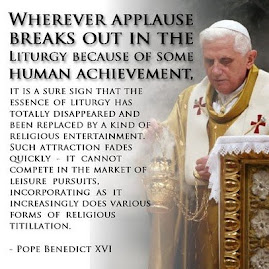Dear Ones,
The more things change, the more they stay the same.
In the 12th century, the morals of Assisi we’re notorious even in the tough Italy of those days, and not only were the subject of sex was concerned. “In new Babylon“ was the title given to the town by the early chroniclers.
Medieval man believed that it was an essential part of life to subject religion to satire. In the annual feast of fools at Christmastime, every rite and article of faith of the Church, no matter how sacred, was celebrated in mockery. Arnoldo Fortini, in Francis of Assisi, gives a detailed account of the debauchery which annually took place in Francis’ own parish church of Saint Nicholas, when on the saint’s feast day a boy-bishop was installed as Lord of the Revels to turn everything topsy-turvy. It was a kind of depraved celebration that bordered on paganism, lasting through Christmas and the feast of the Holy Innocents.m
The common people were allowed an annual temporary compensation for the harsh life which they led under the feudal, communal, and religious authorities. It was believed that this annual psychological safety valve was a good release of tension for the common people. However, the celebration became a time that encouraged murders, beatings, brutality, robbery of every kind, oppression, cheating, and all forms of depravity with no fear of punishment or retribution. All forms of sacrilege and insult were acted out in the church during this period of time. Lewd and bawdy talk was shouted out at nonsensical Masses that were said in gibberish. Games of dice were played out on the altar. Black pudding sausages were eaten during the Masses. Old shoes were burned instead of incense. They saying obscene songs in the choir. They held drinking bouts in the church.
How these memories must have saddened Francis after his conversion! (Since he was a member of the merchant class, he might have even been chosen as a “boy-bishop” when he was younger.). Francis loved to meditate on the birth of the Christ Child. He longed for the people to share the “feast-of-feasts“ instead of the “feast of fools.”
At Greccio three years before he died, Francis, with the help of Giovanni Velita, fulfilled his plans to call to mind the birth of the Christ Child on the night of Christmas. Brothers from nearby Franciscan places were invited. Many torches and candles were needed to make a great light in “that night that has lighted up all the days and years with its gleaming star.” Men and women worked unceasingly in the preparations.
All had been made ready in the forest by Christmas Eve, the Vigil of Christmas: the manger with a figure of the Christ Child, the hay, the ox, and the ass. Francis inspected it and was pleased. At last he had found a way to make a living presentation of the concept in which he passionately believed, in a drama that could not fail to stir even the most unresponsive. The lowly manger would show forth God – small, poor, humble. Assisi may have become a new Babylon, but Greccio would become a new Bethlehem.
Night fell, and it begin to snow. As the hours passed, far-away lights appeared in the valley and began to move up to the hermitage of Francis. Torches too numerous to count blazed up in the darkness, joyous moving lights. There was a great whirlwind of snowflakes dancing in the flickering flames of the torches. There were crackling bonfires to add their light and voice to the jubilation of flames that shone out on that harsh and lonely mount. The night was “lighted up like the day.” A great throng crowded about the manger, where the ox and the ass brought the ancient miracle to life again. The people were “filled with new joy over the mystery.“ The psalms sung by the kneeling friars filled the night. Everything proclaimed celebrity, beauty, and joy: the priest in gold vestments celebrating the Mass, and the altar shining with lights. There was a single harmony that united all things and all creatures.
Francis, vested as a deacon, sang the beautiful lesson: “she gave birth to her first-born Son and wrapped Him in swaddling clothes and laid Him in a manger." His beautiful voice touched everyone. Giovanni Velita was so overwhelmed by it that as Francis sang and read, Giovanni saw the figure of the baby Jesus come to life and awaken and look at St. Francis as he bent over the manger.
This was truly a fitting vision, for the Child Jesus had been forgotten in the hearts of many; but, by the working of His grace, He was brought to life again through His servant St. Francis. This vision was stamped upon their fervent memory; it was the beginning of a new day for all who were there.
St. Francis had conceived of a simple way to awaken everyone’s love and admiration of the Christ Child, especially those who were weak in the faith.
Pray for everyone to share this inner joy and exultation with St. Francis of Assisi.
Pax et Bonum and Merry Christmas!
Sandy





No comments:
Post a Comment